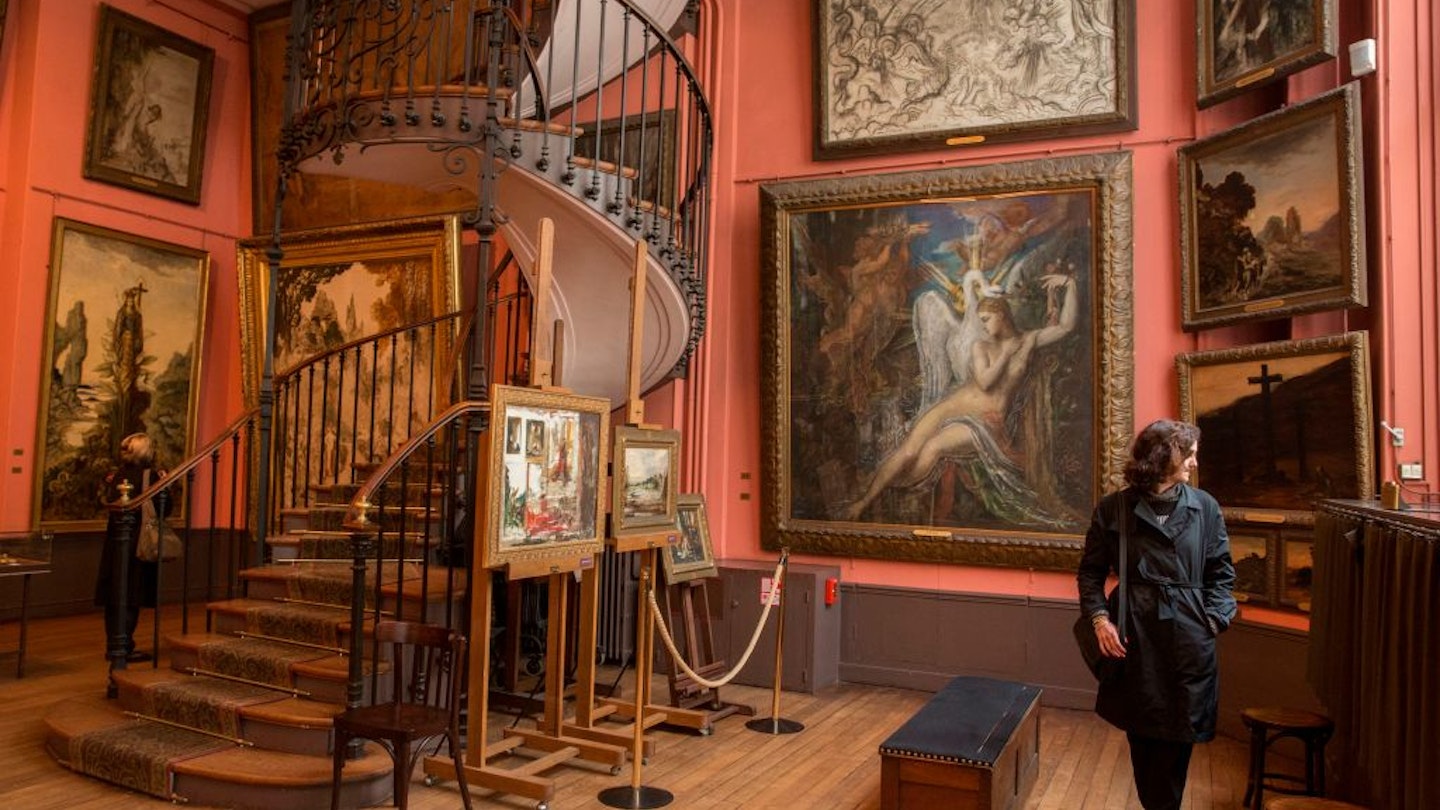Travel writer and cultural correspondent Lindsey Tramuta knows all about the hidden gems of Paris, where she’s been based since 2006. Here, she argues that time-pressed travelers should plan a visit to a favorite of in-the-know art lovers.
Paris offers the chance to engage with culture past and present like no other city on earth. By some estimates, the French capital has more than 120 museums of various sizes within its city limits. This means there’s always a new exhibit or unexplored collection to check out, whether you’re a first-time visitor or lifelong resident. However, such abundance can feel overwhelming, especially for those visitors short on time.
The city’s marquee artistic temples, from the Louvre to the Centre Pompidou (called simply “Beaubourg” by Parisians), are bucket-list destinations for a reason: they house some of the world’s most exceptional, epoch-defining works of art. Yet off the beaten track, stupendous collections and thought-provoking exhibitions await throughout the city if, that is, you know where to look.
What to Skip
After the Louvre, the Musée d’Orsay was the most eye-opening artistic experience on my first trip to Paris as a teen. One of Europe’s largest museums, the Orsay occupies a former railway station on the Rive Gauche (Left Bank), an opulent structure built for the Exposition Universelle of 1900. In 1986, the striking Beaux-Arts building took on its best-known role: as the home to an expansive collection of Impressionist and Post-Impressionist paintings, sculptures, and decorative objects.

While smaller in scale than the monumental Louvre just across the river, the Orsay is no less dense, with some 3000 works on display at any given time. For many, that’s an overwhelming number of pieces – and the crowds jostling for a good shot of Manet’s Olympia can also fray any visitor’s nerves. You should absolutely experience the Musée d’Orsay at least once. However, if its size and visitor numbers discourage you, there’s an enticing alternative across the Seine.
What You Should Do Instead
Paris’ many house museums showcase art and artifacts in evocative and intimate atmospheres. One of the best in town is the Musée National Gustave Moreau, a temple to a major Symbolist painter of the 19th century. Moreau transformed his childhood home-turned-studio into a museum shortly before his death in 1898. The building and its contents have remained virtually unchanged since then.

Moreau’s former apartment occupies the ground floor and serves as a rotating presentation of the more than 1300 paintings, watercolors, and drawings by Moreau that form the collection. Among decorative objects and furnishings, works are hung three or four high, in the 19th-century style – an effect that makes them surprisingly accessible rather than intimidating. Let a sumptuous large-format work of a mythological subject draw you in as you take in vivid depictions of gods, spirits, muses, and biblical scenes.
Perhaps the most striking feature of the space is an unusual cast-iron spiral staircase that appears to unfurl between the second and third-floor studios, bookended by Moreau paintings. For many, it is this architectural marvel, as well as the contextualization of a lesser-known but important artist’s work, that resonates most.
Repurposed house-museums usher the visitor far deeper into the minds of their creators than the massive galleries on the Paris tourist track. Consequently, the Musée Moreau opens the door to a major creator’s compelling cabinet of curiosities—something that the Orsay simply can’t deliver.

How to Make It Happen
Tickets to access the permanent collection cost €7 (€9 including access to the temporary exhibition). The museum is closed Tuesdays and is not accessible for those with mobility needs.





